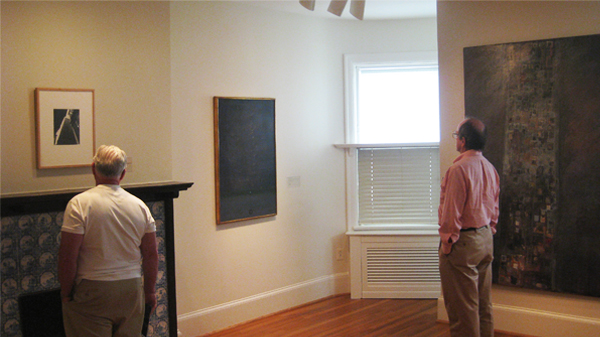
Alfonso Ossorio in the Music Room at The Creeks, 1952. Photograph by Hans Namuth ©1991 Hans Namuth Estate, Courtesy Center for Creative Photography. Featuring paintings by Ossorio, Clyfford Still, and Jean Dubuffet
The artists featured in Angels, Demons, and Savages: Pollock, Ossorio, Dubuffet were in the thick of their careers just as the reputation of East Hampton in Long Island, New York, surged toward its now well-known identity as artist haven. Alfonso Ossorio purchased the 60-acre property “The Creeks” in 1951 at the urging of his friend Jackson Pollock and lived there for most of his creative life. He housed and exhibited Jean Dubuffet’s art brut collection there.
Pollock also resided near East Hampton, in a small homestead in The Springs that is now the Pollock-Krasner House & Study Center. The Center describes the effect of moving to the area on Pollock:
“Before moving to The Springs, his imagery had been congested, his colors somber, and the general mood of his paintings anxious and conflicted. Soon after establishing his studio in the country, however, his colors brightened, his compositions opened up, and his imagery reflected a new responsiveness to nature.”
The region remains an artistic hub, beyond the visual arts. While the 1950s saw a huge creative influx on Long Island with the arrival of artists like Pollock, Ossorio, and Willem de Kooning, the roster of celebrities grew in the ’80s to include stars like Steven Spielberg and Lorne Michaels and in the ’90s to welcome Jennifer Lopez and Jay-Z.
Ossorio’s East Hampton estate, “The Creeks,” and its artistic activity will be the subject of gallery talks next Thursday, April 18, at 6 and 7 pm.
If you are drawn to discover what East Hampton looks like today and explore its potential to influence you artistically, participate in the Hamptons Friends Getaway game for a chance to win the trip for yourself and two friends.


